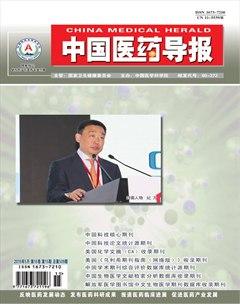血清VEGF、ES水平与多囊卵巢综合征患者卵巢间质血流的关系
蒋雪霞 尹道英 李晓玲 杨艳 王博伟

[摘要] 目的 探討血清血管内皮生长因子(VEGF)、内皮抑素(ES)与多囊卵巢综合征患者(PCOS)卵巢间质血流的关系。 方法 选取重庆市永川区中医院(以下简称“我院”)2016年1月~2017年12月收治的PCOS患者89例为PCOS组,并根据胰岛素抵抗指数将PCOS组分为胰岛素抵抗组(n = 47)和非胰岛素抵抗组(n = 42),另选同期健康体检女性50名为对照组,采用酶联免疫吸附法(ELISA)检测VEGF、ES水平,采用彩色多普勒超声监测搏动指数(PI)、阻力指数(RI)、峰值血流速度(PSV),采用Pearson检验分析VEGF、ES与卵巢间质血流指标的相关性。结果 PCOS组VEGF、ES、PSV水平高于对照组,PI、RI低于对照组,差异有统计学意义(P < 0.05)。胰岛素抵抗组VEGF、ES、PSV水平高于非胰岛素抵抗组,PI、RI低于非胰岛素抵抗组,差异有统计学意义(P < 0.05)。PCOS患者的VEGF、ES与PI、RI呈负相关(rVEGF = -0.476、-0.491;rES = -0.423、-0.365,P < 0.05),与PSV呈正相关(rVEGF = 0.504、rES = 0.463,P < 0.05)。 结论 PCOS患者的VEGF、ES水平呈高表达,并且随着患者胰岛素抵抗增加而升高,抗血管生成治疗有望成为新的治疗靶点。
[关键词] 多囊卵巢综合征;血管内皮生长因子;内皮抑素;卵巢间质血流
[中图分类号] R711.75 [文献标识码] A [文章编号] 1673-7210(2019)05(c)-0085-04
[Abstract] Objective To investigate the relationship between serum vascular endothelial growth factor (VEGF), endostatin (ES) and ovarian stromal blood flow in patients with polycystic ovary syndrome (PCOS). Methods A total of 89 patients with PCOS admitted to Yongchuan District Traditional Chinese Medical Hospital of Chongqing City ("our hospital" for short) from January 2016 to December 2017 was recorded as PCOS group. According to insulin resistance index, PCOS group was divided into insulin resistance group (n = 47) and non-insulin resistance group (n = 42). Another 50 healthy women in the same period were selected as control group. Enzyme-linked immunosorbent assay (ELISA) was used to detect the level of VEGF and ES. The pulsatility index (PI), resistance index (RI) and peak velocity (PSV) was monitored by color Doppler ultrasound. Pearson test was used to analyze the correlation between VEGF, ES and ovarian stromal blood flow. Results The levels of VEGF, ES and PSV in PCOS group were higher than that control group, and PI and RI in PCOS group were lower than that in control group (P < 0.05). The levels of VEGF, ES and PSV in insulin resistance group were higher than that in non-insulin resistance group, and PI and RI in insulin resistance group were lower than that in non-insulin resistance group (P < 0.05). In PCOS patients, the levels of VEGF and ES were negatively correlated with PI and RI (rVEGF = -0.476, -0.491, rES = -0.423, -0.365, P < 0.05), and positively correlated with PSV (rVEGF = 0.504, rES = 0.463,P < 0.05). Conclusion The levels of VEGF and ES in PCOS patients are highly expressed, and increase with the increase of insulin resistance. Antiangiogenesis therapy is expected to become a new therapeutic target.

